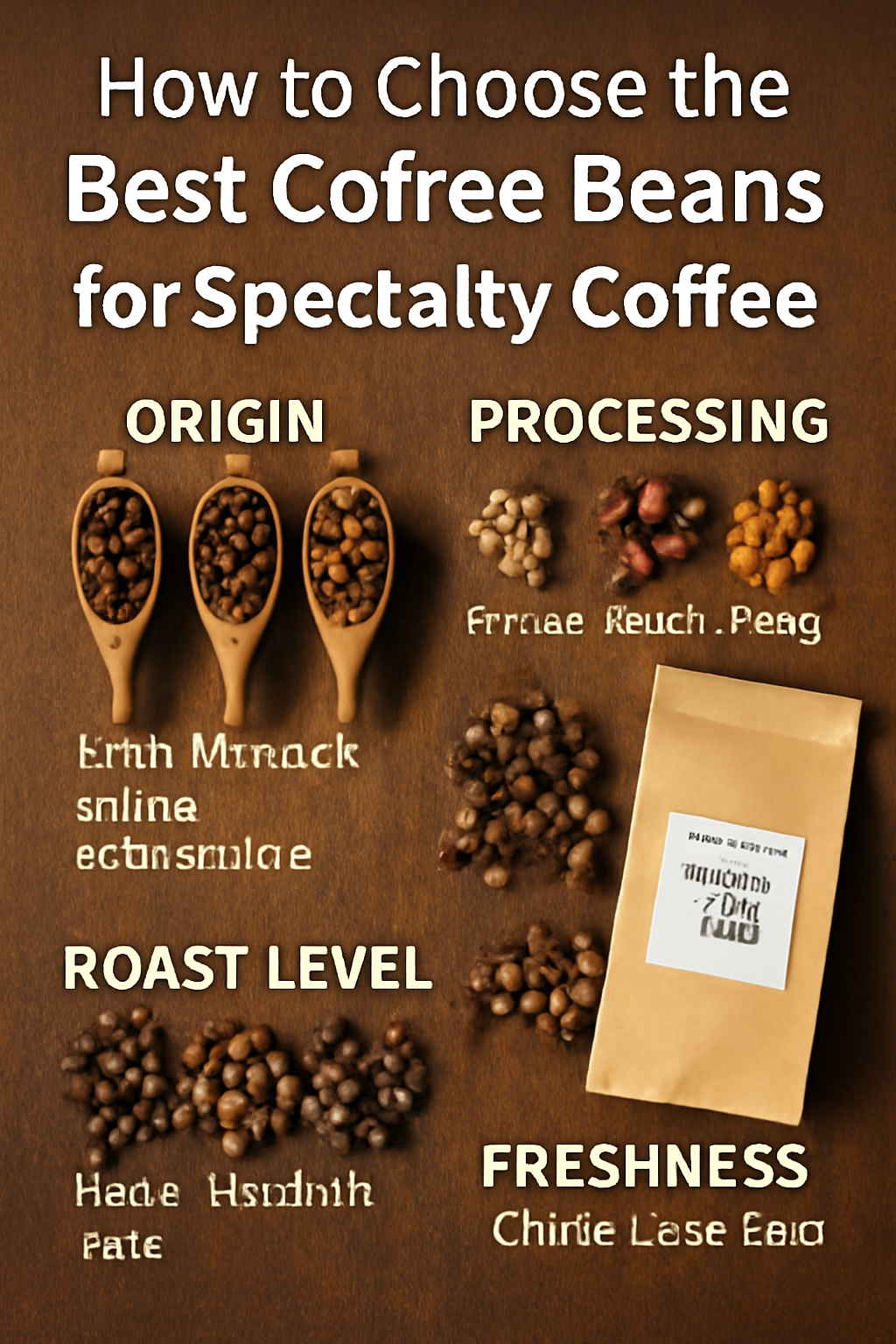Choosing the best coffee beans for specialty coffee is an art and a science that every barista and coffee enthusiast should master. Specialty coffee demands quality from the source to the cup, and selecting the right beans is the foundation of this excellence. This guide will take you through everything you need to know about choosing premium coffee beans, understanding their origins, processing methods, roast levels, and storage to ensure every brew delivers a rich, flavorful experience.
Understanding Specialty Coffee
Specialty coffee refers to coffee that scores 80 points or above on a 100-point scale by certified coffee graders. It emphasizes quality at every stage—cultivation, harvesting, processing, roasting, and brewing. The beans used are typically from specific regions known for their unique flavor profiles and are grown under optimal conditions, often at high altitudes.
Specialty coffee beans are usually Arabica, prized for their superior flavor compared to Robusta. They are carefully selected and handled to preserve their unique characteristics, making them distinct from commercial or commodity-grade beans.
Know Your Coffee Origins
The origin of coffee beans greatly influences their flavor. Different regions have distinct climates, soils, altitudes, and cultivation methods, all of which contribute to the coffee’s profile.
- Latin America: Known for clean, bright coffees with citrus, chocolate, and nutty notes. Countries like Colombia, Costa Rica, and Guatemala produce widely loved specialty beans.
- Africa: Produces fruity, floral coffees with complex acidity. Ethiopia and Kenya are famous for their distinctive bright and winey flavors.
- Asia and Pacific: Beans from Indonesia, Papua New Guinea, and Yemen tend to be earthier, full-bodied, with spicy or herbal notes.
As a barista or specialty coffee lover, learning about these origins helps you select beans that match your flavor preferences or your customers’ tastes.
Processing Methods and Their Impact
How coffee beans are processed after harvest affects their flavor profile. The main processing methods include:
- Washed (Wet) Process: The fruit is removed before drying the beans. This method yields a cleaner, brighter flavor with pronounced acidity, common in Latin American coffees.
- Natural (Dry) Process: The whole coffee cherry is dried before removing the fruit. This process enhances sweetness and body, often producing fruity and wine-like flavors, typical of many African coffees.
- Honey Process: A hybrid where some fruit remains on the bean during drying. It balances sweetness and acidity, resulting in complex flavors.
Understanding processing methods allows you to anticipate the flavor profile and choose beans that fit the desired taste experience.
Selecting the Right Roast Level
Roasting transforms green coffee beans into the aromatic brown beans used for brewing. The roast level dramatically impacts flavor:
- Light Roast: Preserves original bean flavors, highlighting acidity, floral, and fruity notes. Ideal for single-origin specialty coffees where the terroir is showcased.
- Medium Roast: Balances acidity and body, bringing out caramel and chocolate undertones.
- Dark Roast: Produces bold, smoky, and bitter flavors, sometimes masking origin characteristics. Often preferred for espresso blends.
When choosing beans, consider the roast level that suits your brewing method and taste preferences. Specialty coffee often favors lighter to medium roasts to highlight unique flavors.
Freshness Matters: How to Assess Coffee Beans
Freshness is critical for specialty coffee. Coffee beans begin to lose flavor shortly after roasting due to oxidation. Buying freshly roasted beans ensures maximum aroma and taste.
Look for roast dates on packaging rather than sell-by or best-before dates. Ideally, use beans within two to four weeks of roasting. Also, buy whole beans and grind them just before brewing to preserve freshness.
Ethical and Sustainable Sourcing
Specialty coffee also emphasizes ethical sourcing practices. Look for beans that are certified organic, Fair Trade, Rainforest Alliance, or directly traded. These certifications ensure farmers receive fair compensation and use sustainable farming methods, which often translates into better quality coffee.
Supporting ethical sourcing benefits the environment, communities, and helps maintain high standards in the coffee industry.
Storage Tips for Specialty Coffee Beans
Proper storage extends the life and quality of your beans. Store coffee in an airtight container away from light, heat, moisture, and strong odors. Avoid refrigeration or freezing as condensation can damage the beans.
Keep small quantities for daily use and replenish often to ensure the freshest coffee possible.
Tasting and Experimenting
Developing a refined palate is key to choosing the best beans. Taste coffees from different origins, processing methods, and roast levels. Pay attention to flavors, acidity, body, and aftertaste. Cupping sessions—professional coffee tastings—are excellent opportunities to train your senses.
Experiment with brewing techniques and grind sizes to explore how different beans express their flavors.
Buying from Trusted Roasters and Suppliers
Purchase specialty coffee beans from reputable roasters who prioritize quality and transparency. Many roasters provide detailed information about origin, processing, and tasting notes, helping you make informed choices.
Local roasters often offer fresher beans and the chance to learn directly from experts.
Conclusion: Elevate Your Coffee Experience
Choosing the best coffee beans for specialty coffee is a rewarding process that enhances every cup you brew. By understanding origins, processing, roast levels, and freshness, you can select beans that bring out the best flavors and satisfy even the most discerning palates.
Invest time in learning about coffee beans and developing your tasting skills. With the right beans, your specialty coffee journey will be filled with discovery, enjoyment, and exceptional coffee moments.

